David A. Tepper Quadrangle
Project Description
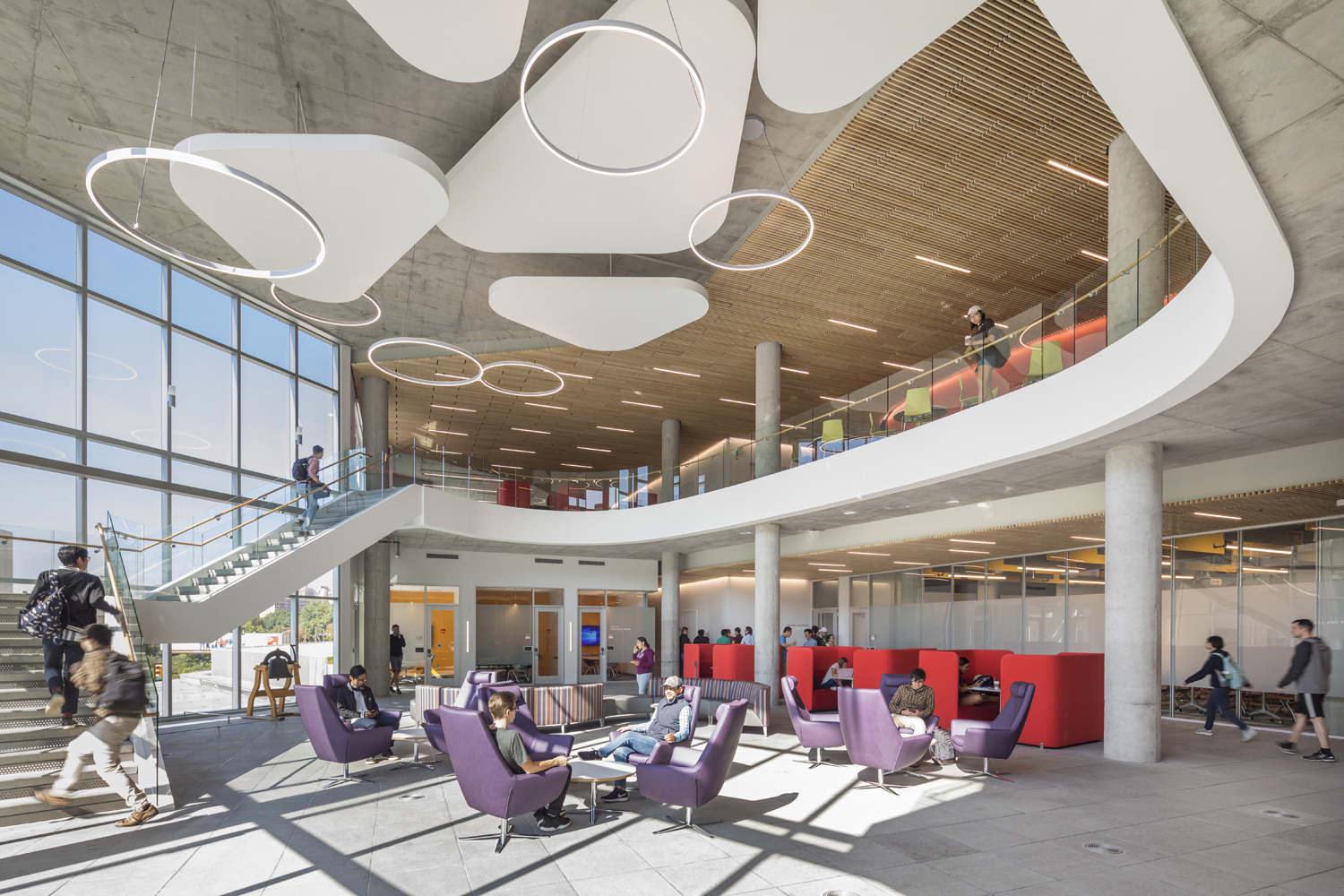
The Tepper Quad Project consists of a new 315,000 square feet state of the art building that houses the Tepper School of Business, the David and Susan Coulter Welcome Center, Multi use HUB/Forum, 600 seat Simmons Auditorium and a 7,200 square foot Fitness Center. There is also Rohr's Cafe and a Coffee Bar. It contains specialized areas designed for programs such as the Entrepreneurship Center and the TEL Center (Technology Enhances Learning). The project also includes a 130 space parking garage under the building, 290 surface spaces in the remaining Morewood surface lot, landscaping and site utility infrastructure.
Daring design and intuitive engineering combine in the David A. Tepper Quadrangle to create high-performance, flexible spaces that promote health and wellbeing among students and faculty, encourage social interaction, and provide greater opportunities for collaboration. Several of the key sustainability features are highlighted below.
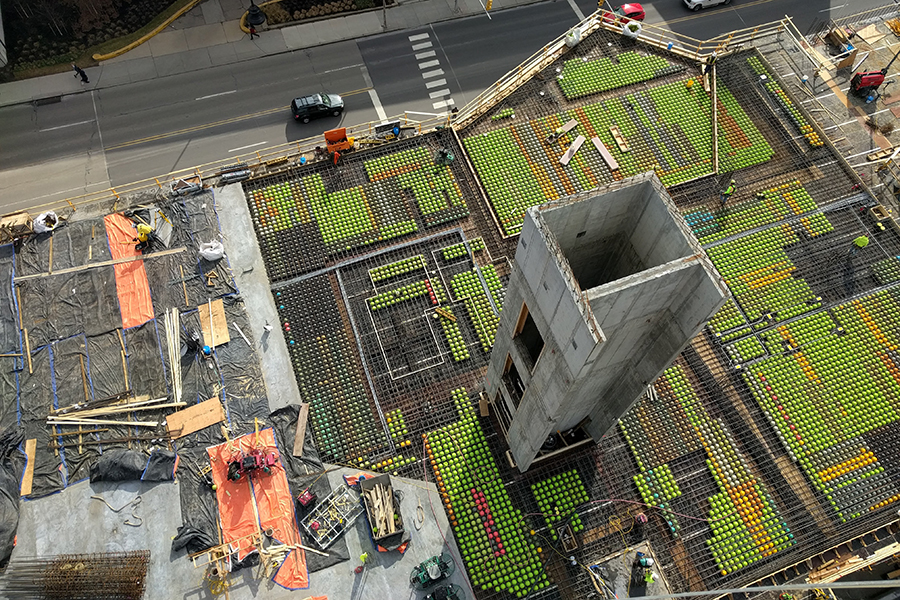
The innovative use of BubbleDeck technology within the structural design proved revolutionary to the realization of the Business School. BubbleDeck technology incorporates recycled plastic balls within concrete to create a honeycomb structure that is as strong as a solid concrete slab, yet weighs 35% less. The balls that run through a BubbleDeck slab are made from recycled high density polyethylene, which comes from reject plastic kayaks. Compared to solid concrete, a BubbleDeck structure can reduce a building’s embodied carbon by 30%. The inbuilt strength of the BubbleDeck structure allows for large floor spans, which create an open plan environment that is conducive to collaboration and ensure flexibility in the future use of space. Carnegie Mellon is the first university to use BubbleDeck technology in Pennsylvania, and the Tepper Business School has the largest floor area of any BubbleDeck building in the USA.
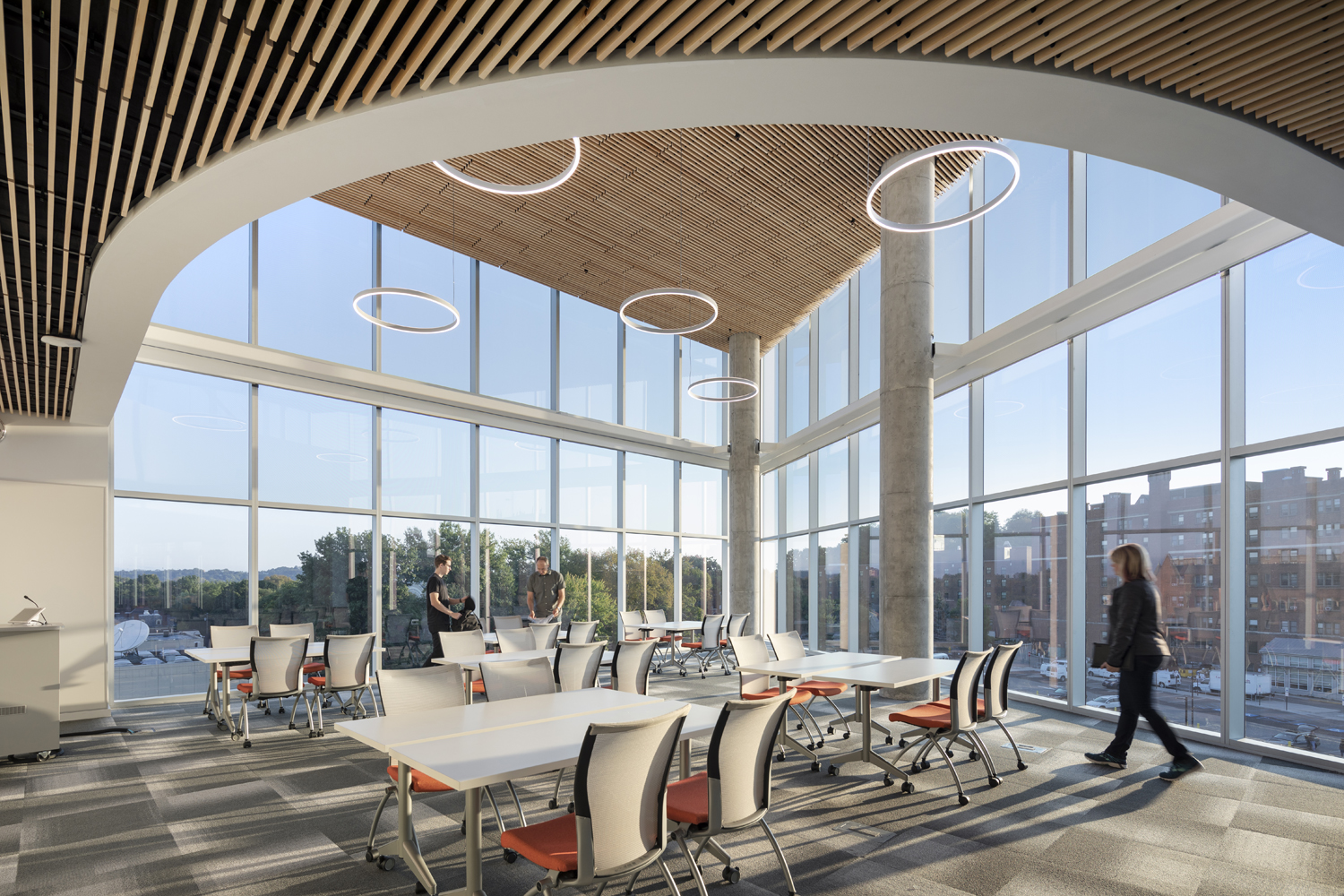
Numerous energy conservation measures are incorporated into the design of the Tepper School of Business. The facade is fitted with fritted glass and louvers that minimize solar glare and heat gain. This keeps cooling loads down and significantly improves the energy efficiency of the building. An additional energy-savings strategy is the use of highly efficient radiant slabs, which provide heating or cooling depending on the season. Thirdly, an underfloor air distribution system is used to provide fresh air directly to the occupiable spaces, thereby minimizing wasted energy associated with supplying air to the full volume of the space.
The School of Business is not only energy-conscious, but highly water-conscious as well. As Pittsburgh has ample rainfall throughout the year, a greywater system exists in the project that captures rainwater and recycles it for use in toilet flushing and landscape irrigation. This, in conjunction with additional water conservation efforts, allowed Tepper to reach over 50% potable water use reduction throughout the site.
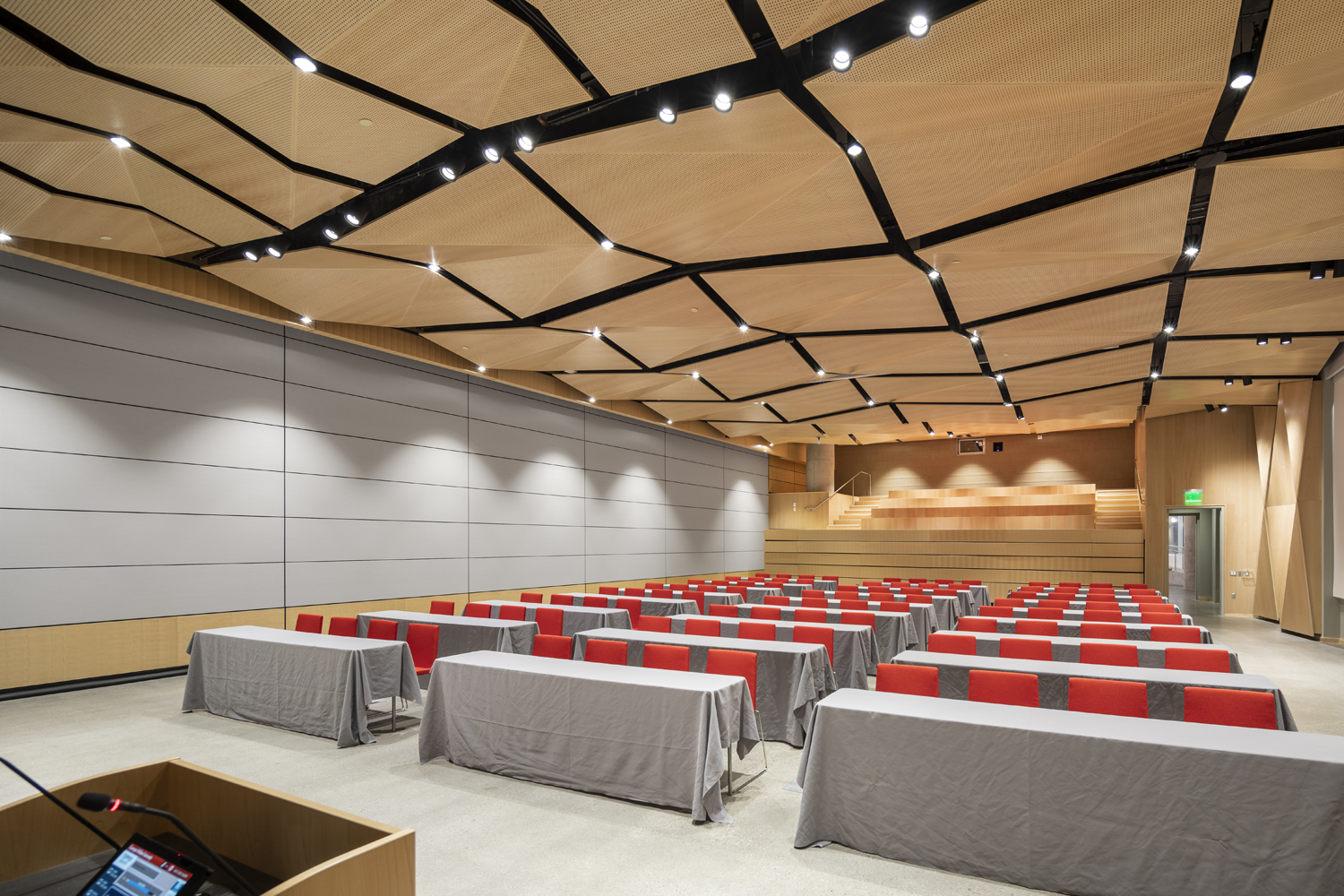
Many measures were taken to assure high occupancy comfort within the building. Underfloor air diffusers, adjustable thermostats, bi-level light switches, and internal blinds ensure that occupants have controllability of their environment and are able to remain comfortable at all times. Further, building acoustics are designed to ensure sounds are reflected or absorbed appropriately to prevent unwanted noise from passing through walls, particularly in classrooms and other learning environments where sound quality is crucial.
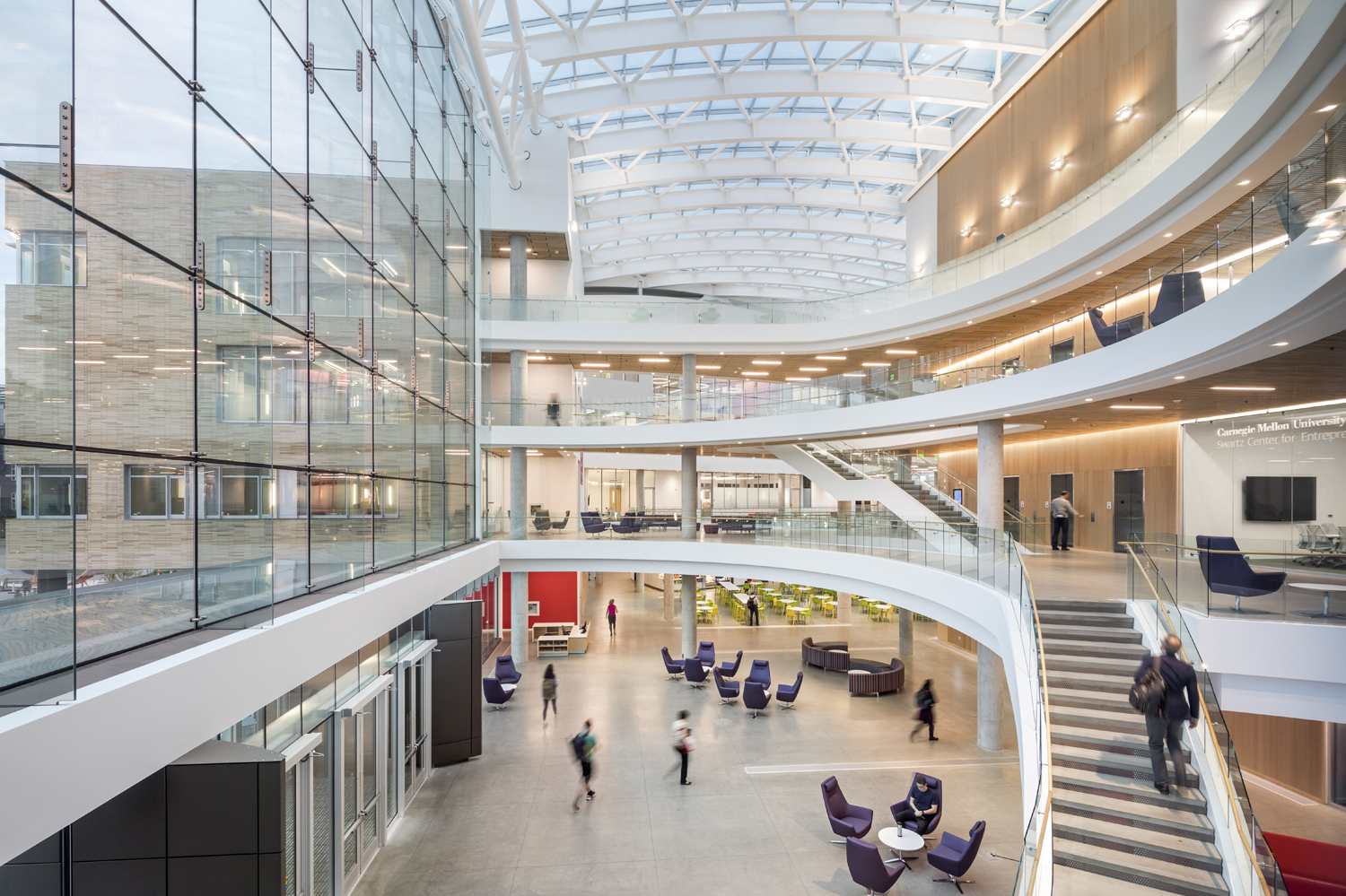
Another theme throughout the design and planned operations of the Tepper School of Business is a focus on human health and wellbeing. The full height atrium is a great example of this, as it incorporates internal landscaping and ample daylighting within the space, while providing uplifting views over the city beyond. Further, the atrium draws natural light deep into the heart of the Business School, thereby providing daylight to spaces that conventionally would not receive any. Such access to nature is proven to boost wellbeing and lower stress levels.
The full height atrium also features sweeping staircases, which encourage occupants to take the stairs. This, in addition to the fitness center within the building, provides convenient methods for students and staff to step away from the computer screen and incorporate physical activity into their daily routines. Nutritional health is addressed through the building’s operational plan.
Team Members
Campus Design and Facility Development worked in conjunction with the following organizations to complete the project:
PJ Dick, Pittsburgh, PA - Construction Manager
Moore Ruble Yudell Architects & Planners, Santa Monica, CA - Executive & Design Architect
Renaissance 3 Architects, Pittsburgh, PA - Associate Architect
Buro Happold, Los Angeles, CA - MEP, Structural, and Sustainability Engineer
Langan, Canonsburg, PA - Civil Engineer